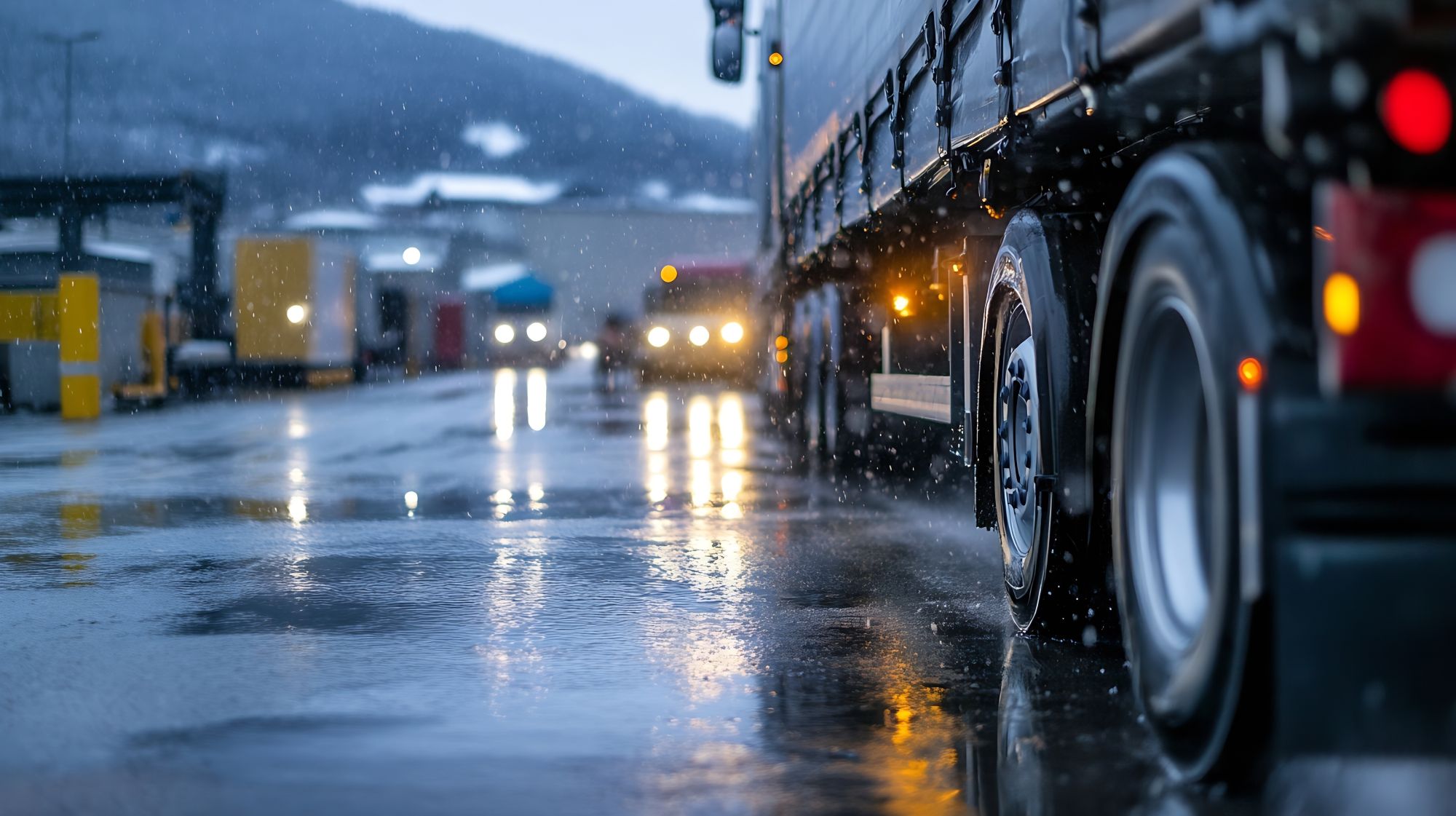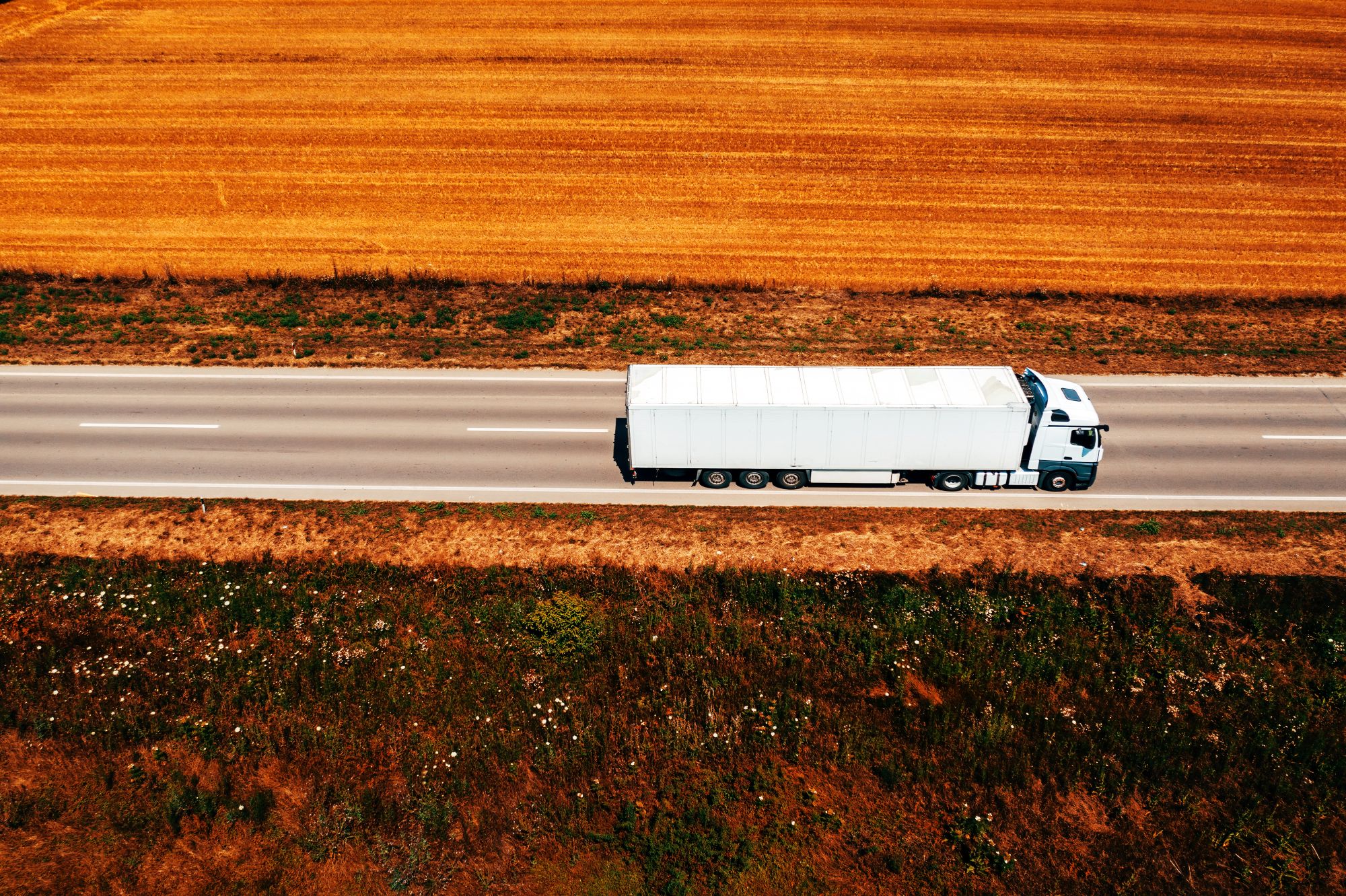
Guest
Impactul schimbărilor climatice asupra sectorului mobilității
Creat: 21.07.2025
•
Actualizat: 21.07.2025
Schimbările climatice nu mai reprezintă un risc îndepărtat. Pentru cei care lucrează în domeniul transportului rutier, este o realitate operațională zilnică - una care devine tot mai greu de ignorat cu fiecare an care trece. De la valurile de căldură care topesc asfaltul la inundațiile care blochează rutele principale, impactul schimbărilor climatice face parte integrantă din activitatea de transport de mărfuri.
Pentru managerii de flote, acest lucru înseamnă navigarea prin reglementări în continuă evoluție, actualizarea infrastructurii și regândirea planificării continuității. Pentru șoferi, aceasta înseamnă adaptarea la noile riscuri de pe șosea - de la explozia anvelopelor la întreruperea intervalelor de livrare. Iar pentru întregul sector, aceasta semnalează necesitatea unei abordări mai rezistente și mai sensibile la schimbările climatice în ceea ce privește mobilitatea.
Perturbările meteorologice reprezintă o amenințare operațională
În iulie 2022, Marea Britanie a înregistrat cea mai caldă zi înregistrată vreodată. Pe măsură ce temperaturile au urcat până la 40 ℃, drumurile au început să se înmoaie, cu secțiuni ale A14 închise din cauza degradării suprafeței. Operatorii de flote au fost nevoiți să redirecționeze livrările, uneori într-un timp foarte scurt, în timp ce temperaturile motoarelor au crescut vertiginos, iar vehiculele s-au chinuit să își mențină performanțele.
În același an, vânturile puternice provocate de Furtuna Eunice au provocat pagube extinse pe coridoarele de transport de marfă din Europa de Vest, răsturnând vehicule cu laturi înalte și deteriorând încărcături sensibile la temperatură. Între timp, în ianuarie 2024, furtuna Henk a inundat zone întinse din centrul Angliei. Principalele rute din Midlands au fost impracticabile, iar unii șoferi au rămas blocați ore întregi.
Acestea nu sunt evenimente izolate. Ele sunt semne ale unui sistem de transport din ce în ce mai vulnerabil la amenințările climatice. Suprafețele drumurilor, componentele vehiculelor și rețelele logistice sunt toate puse la încercare de condițiile în schimbare - iar consecințele se resimt în întregul lanț de aprovizionare.
Lanțuri de aprovizionare perturbate
Când vine vorba de perturbările legate de climă, impactul nu se face simțit doar pe rute individuale. Lanțuri întregi de aprovizionare sunt afectate - uneori cu un avertisment insuficient. În Țările de Jos, creșterea nivelului mării și precipitațiile mai abundente determină autoritățile și întreprinderile să reevalueze rezistența infrastructurii logistice esențiale, în special în zonele industriale joase.
Portul Rotterdam - cel mai mare port maritim din Europa - a luat măsuri active pentru a se adapta la riscurile climatice, consolidând pereții cheiurilor, înălțând drumurile de acces și modernizând sistemele de canalizare pluvială pentru a se proteja împotriva inundațiilor. Centrele logistice interioare sunt, de asemenea, analizate, deoarece fenomenele meteorologice extreme au scos la iveală vulnerabilități ale căilor de acces și ale drenajului.
Inovație în transporturi
Tehnologia flotelor se îmbunătățește rapid, în special în ceea ce privește electrificarea și diagnoza inteligentă. Însă schimbările climatice creează noi tensiuni chiar și pentru cele mai avansate vehicule. Eficiența bateriei poate scădea cu până la 20% pe vreme rece, reducând autonomia efectivă a camionetelor electrice. În același timp, temperaturile ridicate accelerează degradarea anvelopelor și pun presiune suplimentară pe sistemele de răcire ale vehiculelor.
Pentru a aborda aceste probleme, unii operatori investesc în sisteme de întreținere predictivă care utilizează telematica pentru a anticipa uzura și a programa reparațiile înainte de apariția unor defecțiuni costisitoare. Alții modernizează sistemele de confort din cabină pentru a proteja bunăstarea șoferilor în perioadele de căldură sau frig extreme. Deși aceste schimbări implică investiții inițiale, ele pot aduce dividende în ceea ce privește timpul de funcționare, siguranța și păstrarea șoferilor.
Riscul climatic în creștere remodelează, de asemenea, asigurările. Unii asigurători reacționează la frecvența crescută a cererilor de despăgubire cauzate de fenomene meteorologice extreme prin creșterea primelor și înăsprirea excluderilor. Polițele de întrerupere a activității, în special, sunt supuse unei examinări mai atente, în special atunci când lanțurile de aprovizionare sunt vulnerabile la întreruperi repetate. Și, în timp ce asigurarea mărfurilor rămâne un aspect de luat în considerare, nu toate polițele acoperă automat întârzierile cauzate de fenomene climatice precum inundațiile sau vânturile puternice.
Managerii de flote ar trebui să își revizuiască acoperirea în lumina acestor riscuri emergente. Aceasta înseamnă să verifice excluderile, să evalueze modul în care sunt definite evenimentele legate de climă și să se asigure că lacunele critice - cum ar fi timpii morți din cauza închiderii drumurilor - sunt abordate în mod adecvat. În unele cazuri, demonstrarea unei abordări proactive în ceea ce privește gestionarea riscurilor, atenuarea efectelor inundațiilor și formarea șoferilor poate contribui, de asemenea, la obținerea unor condiții mai favorabile.

Cadrul de reglementare
În timp ce impactul fizic al schimbărilor climatice este deja vizibil, schimbările de reglementare adaugă un alt nivel de complexitate pentru operatori. Zonele cu emisii reduse se extind rapid în Regatul Unit și în Europa, impunând noi cerințe privind componența flotei și conformitatea. În Londra, zona ULEZ (Ultra Low Emission Zone) continuă să se extindă, în timp ce orașe precum Birmingham și Oxford au introdus propriile variante.
La nivel european, pachetele Green Deal și Fit for 55 au stabilit obiective ambițioase pentru decarbonizare. Operatorii de flote sunt stimulați - și din ce în ce mai mult obligați - să treacă la combustibili și tehnologii mai puțin poluante. De la mandatele de electrificare la normele privind transparența lanțului de aprovizionare, operatorii se confruntă acum cu o nouă bază de referință pentru ceea ce este considerat o practică de afaceri acceptabilă.
Pentru cei care gestionează flote, aceste schimbări reprezintă atât o provocare logistică, cât și o oportunitate strategică. Adoptarea sustenabilității nu înseamnă doar evitarea penalizărilor, ci și protejarea operațiunilor pentru viitor și rămânerea în fața așteptărilor în schimbare ale clienților.
Construirea de operațiuni reziliente
Adaptarea nu are loc peste noapte, dar schimbările treptate pot avea un impact semnificativ. Unii operatori efectuează în prezent evaluări ale riscurilor climatice în cadrul operațiunilor flotei lor, identificând activele și rutele cele mai vulnerabile la perturbări. Alții oferă șoferilor cursuri de formare actualizate pentru a îmbunătăți siguranța și luarea deciziilor în timpul fenomenelor meteorologice extreme.
Opțiunile în materie de combustibil se schimbă și ele. Transportatorii care caută alternative cu emisii reduse de carbon se orientează către HVO - ulei vegetal hidrotratat - o alternativă la motorină care reduce emisiile fără a necesita o nouă infrastructură. În același timp, cei care investesc în software de optimizare a încărcăturii văd beneficii nu doar în economia de combustibil, ci și în reducerea emisiilor care sprijină obiectivele de conformitate.
Nu mai există nicio îndoială că schimbările climatice modelează viitorul transportului rutier, nu peste zeci de ani, ci chiar acum. Provocarea pentru operatori este să treacă de la o mentalitate reactivă la o mentalitate mai strategică, pe termen lung. Aceasta înseamnă să înțeleagă riscurile, să acționeze din timp și să recunoască faptul că reziliența devine rapid o sursă de avantaj competitiv.
"Auzim același lucru de la operatorii de flote din Regatul Unit și din Europa", spune Nick Renton, șef al departamentului european de strategie și dezvoltare a afacerilor din cadrul SNAP. "Dezastrul climatic nu este un risc viitor - este deja aici, afectând totul, de la depozitarea și planificarea rutelor la bunăstarea șoferilor. Flotele care vor prospera vor fi cele care vor trata reziliența la schimbările climatice ca pe o strategie de afaceri, nu doar ca pe un răspuns de urgență.
"Este important deoarece costul inacțiunii este în creștere - nu doar din punct de vedere financiar, ci și în ceea ce privește livrările ratate, întreruperile operaționale și bunăstarea șoferilor pe drum. Dacă dorim să menținem mărfurile în mișcare și întreprinderile în creștere, trebuie să începem să construim această reziliență acum."
La SNAP, lucrăm îndeaproape cu flote din Marea Britanie și Europa pentru a le ajuta să navigheze în această nouă realitate. Fie că este vorba de informații, parteneriate sau instrumente mai inteligente pentru operațiunile de pe șosea, suntem aici pentru a-i sprijini pe cei care mențin roțile în mișcare - indiferent de vreme. [Înscrieți-vă astăzi] (https://snapacc.com/sign-up/) pentru a beneficia de soluțiile noastre de gestionare a flotei.



